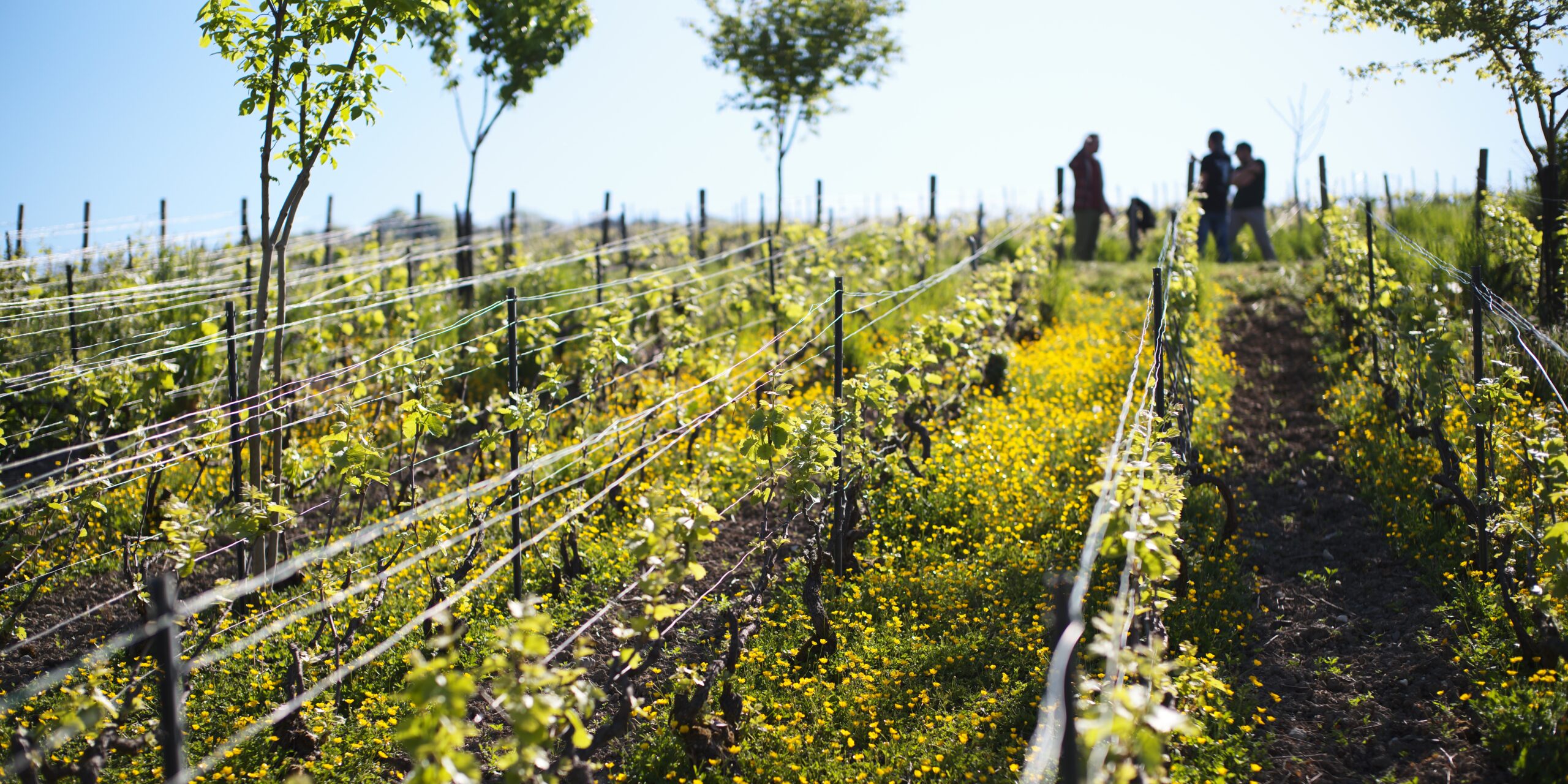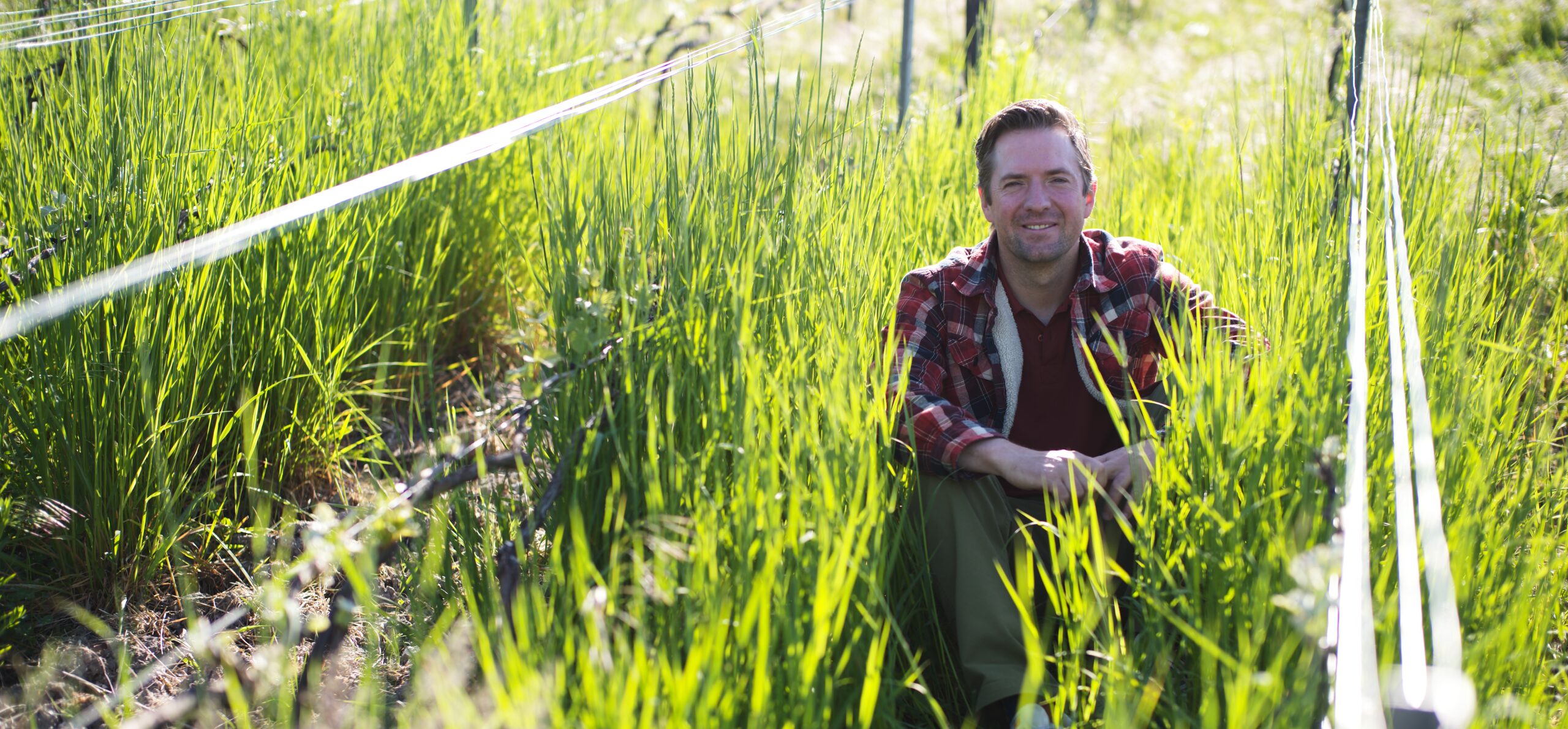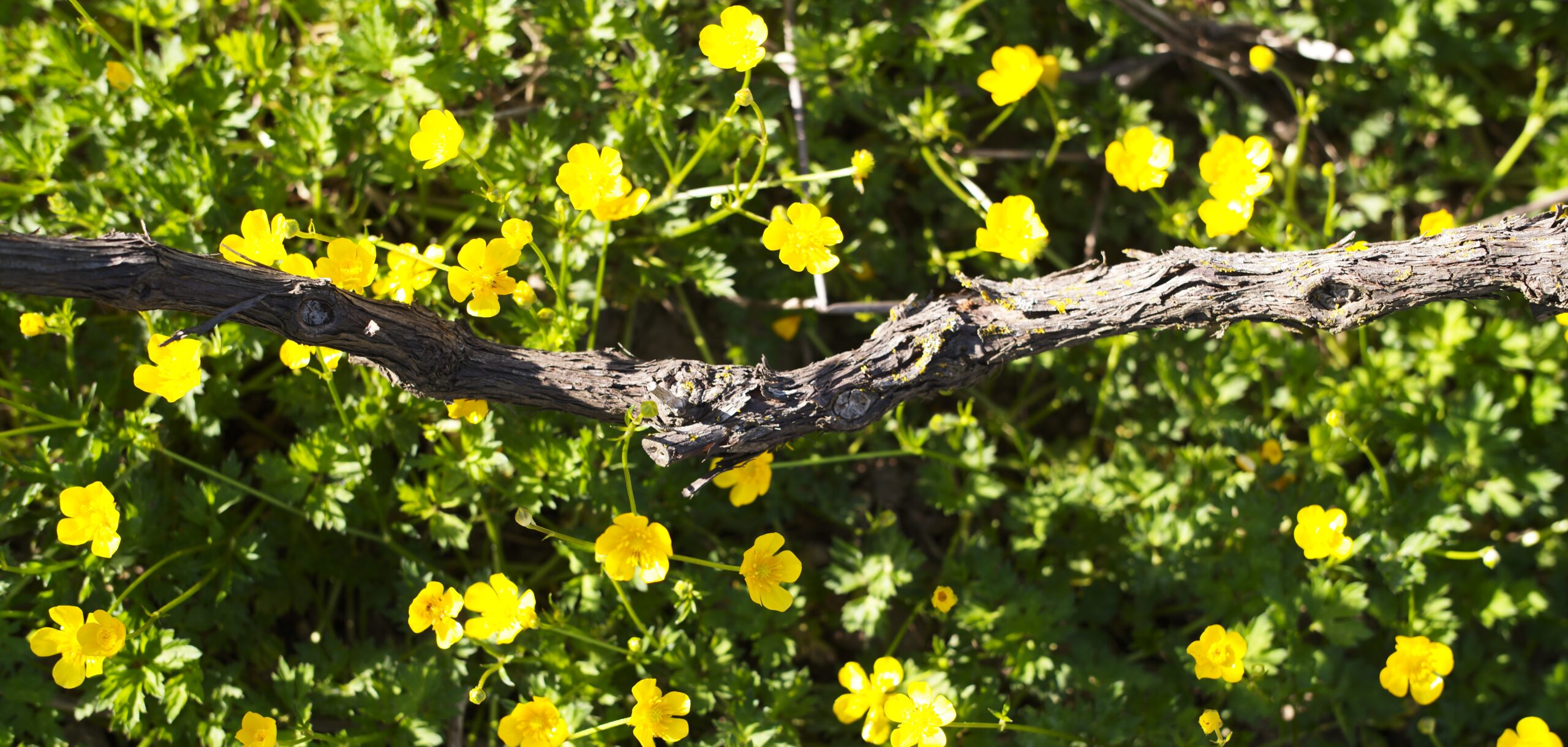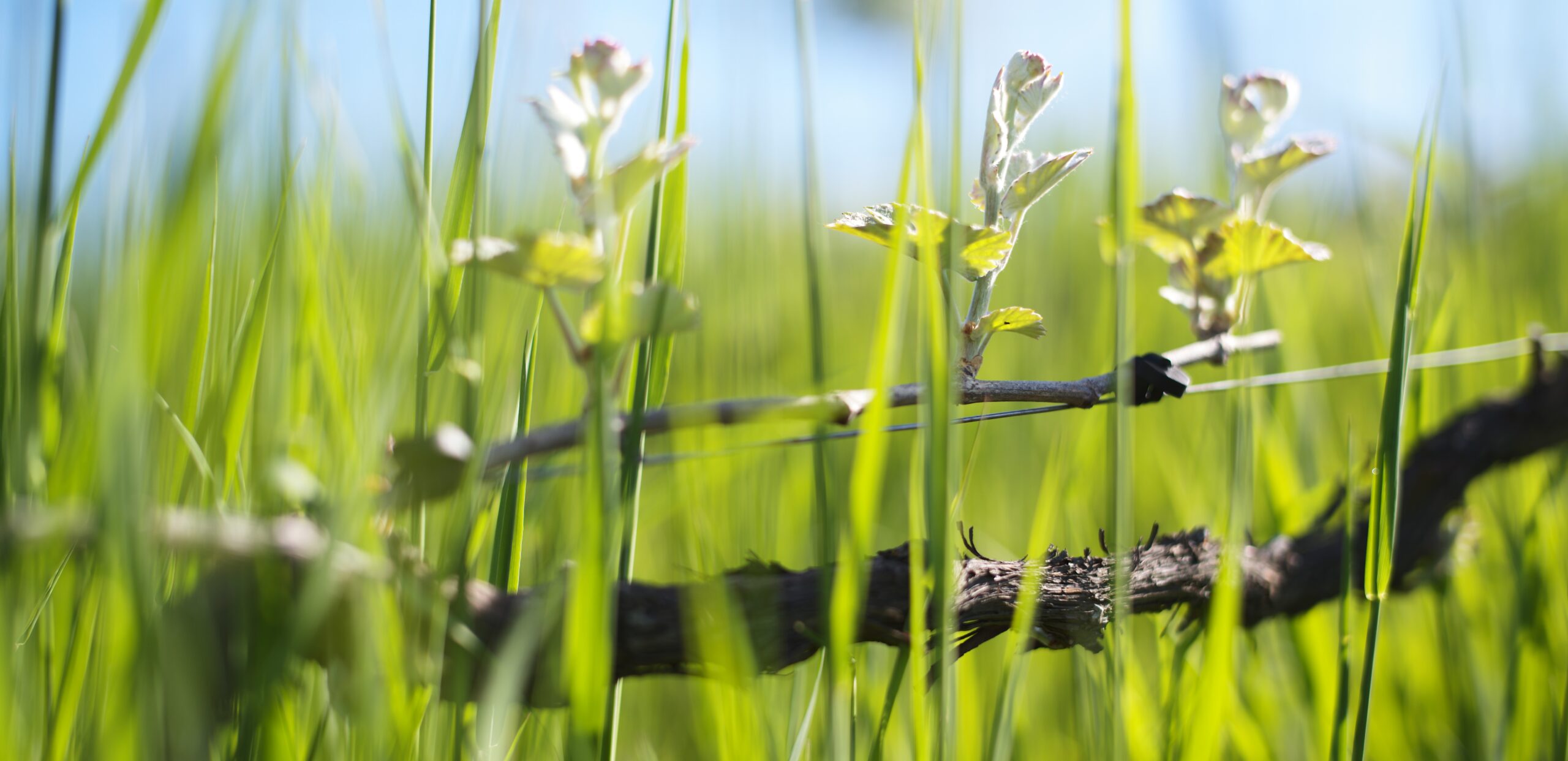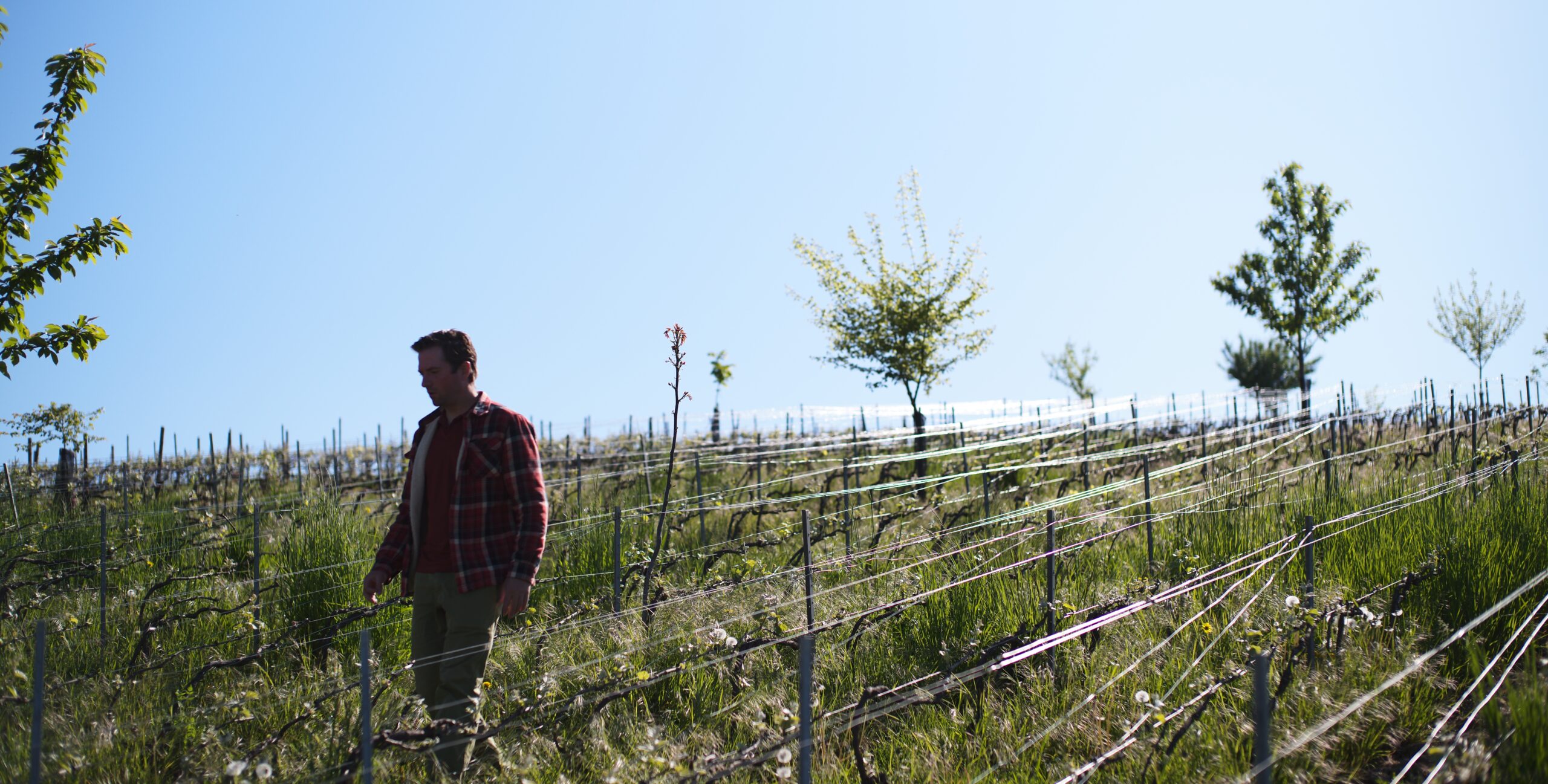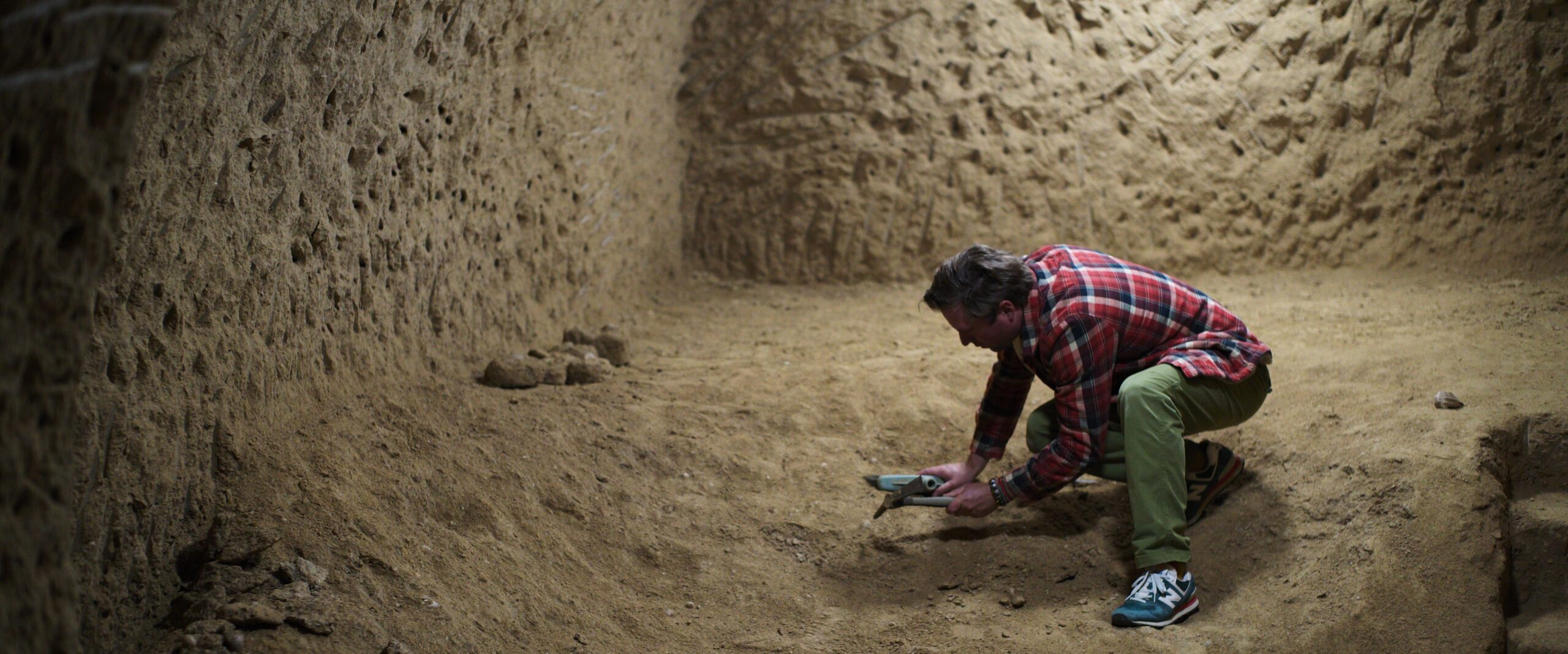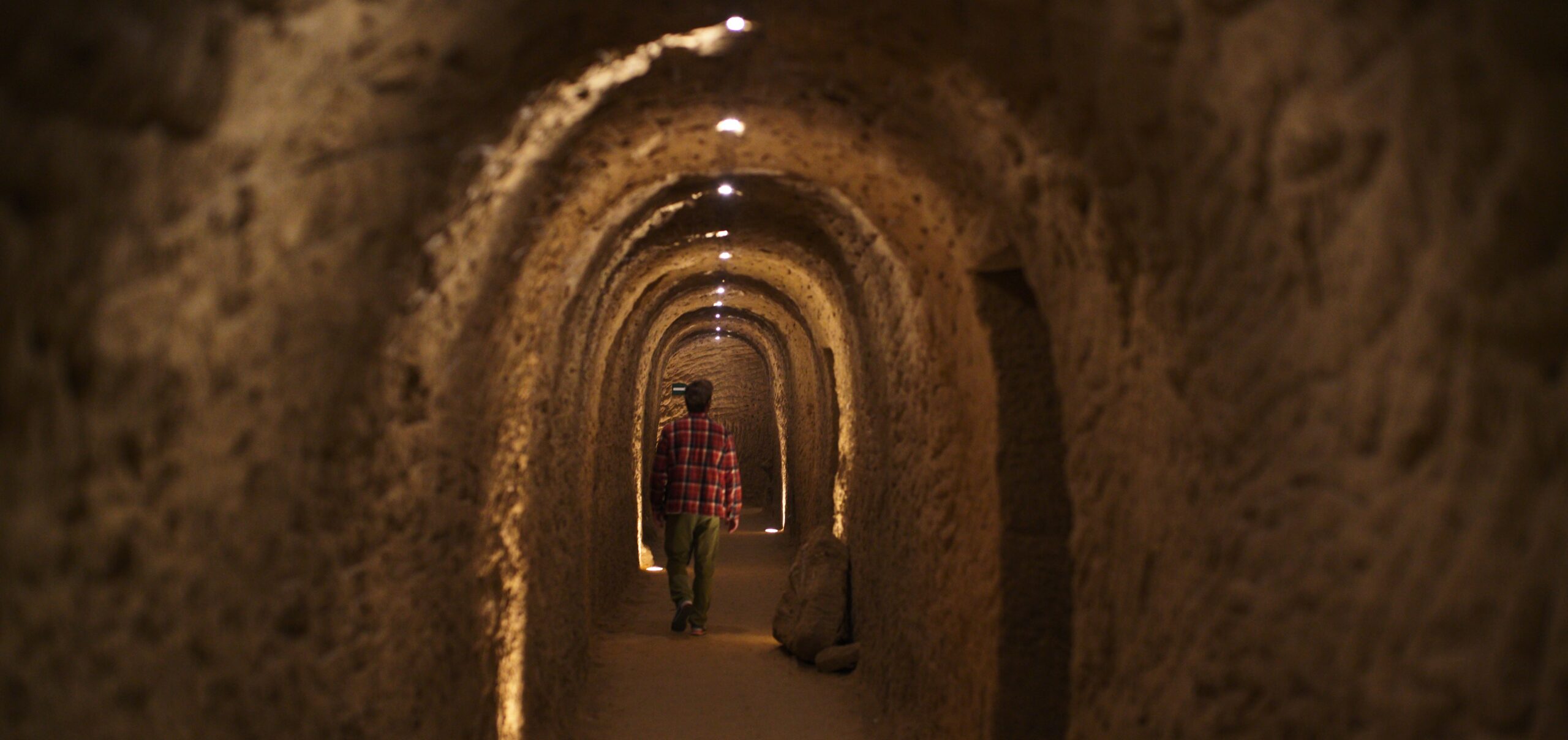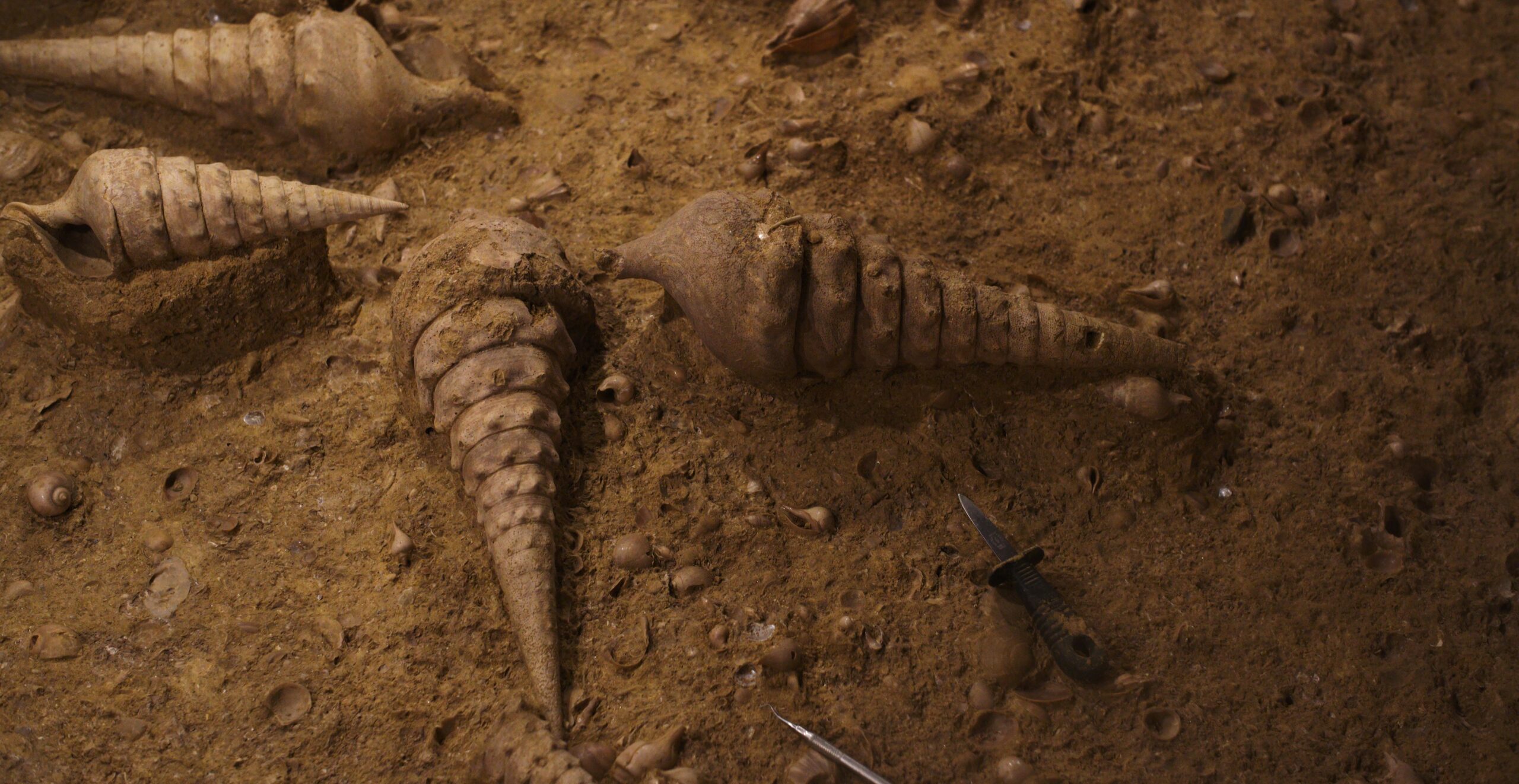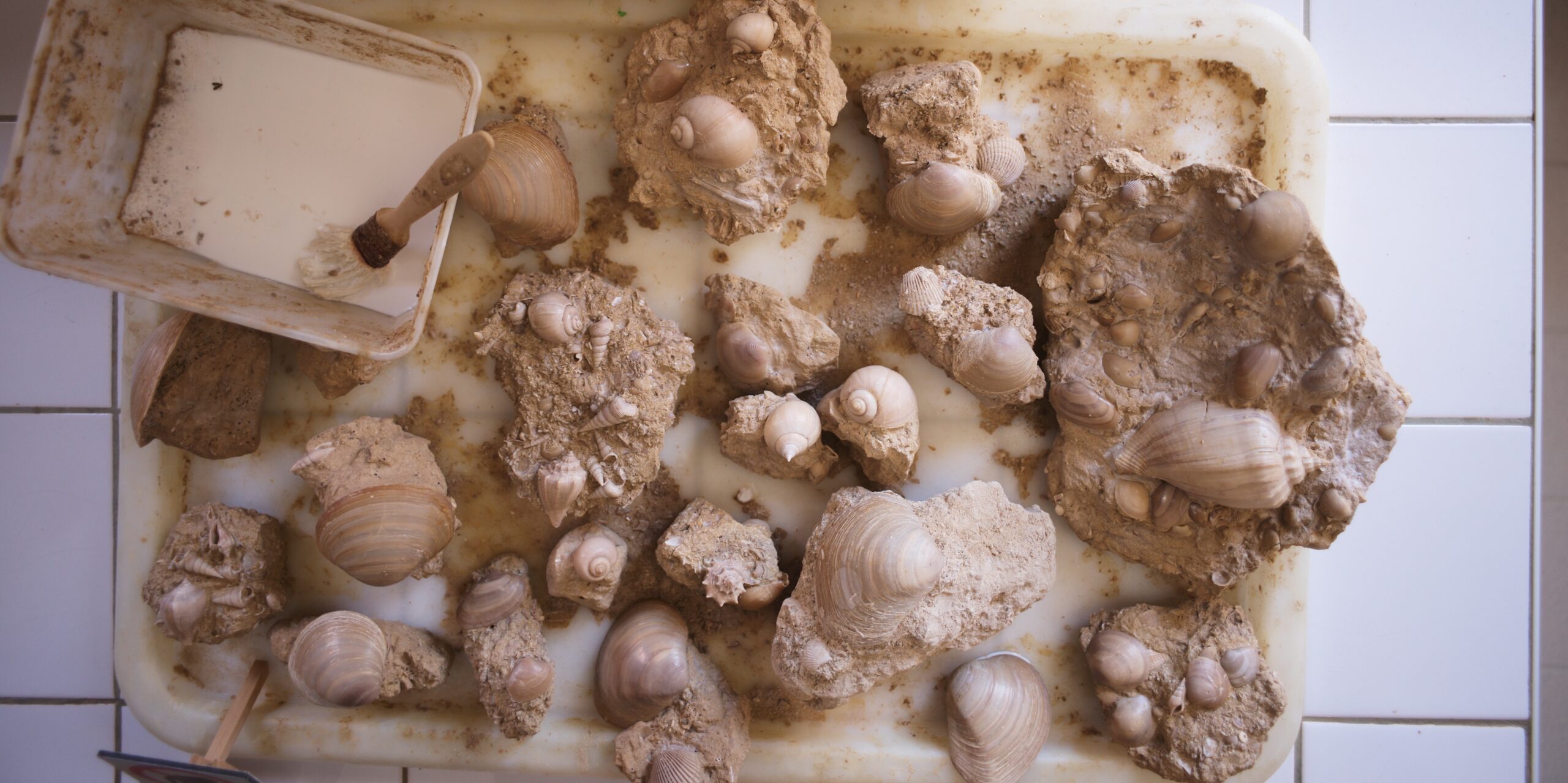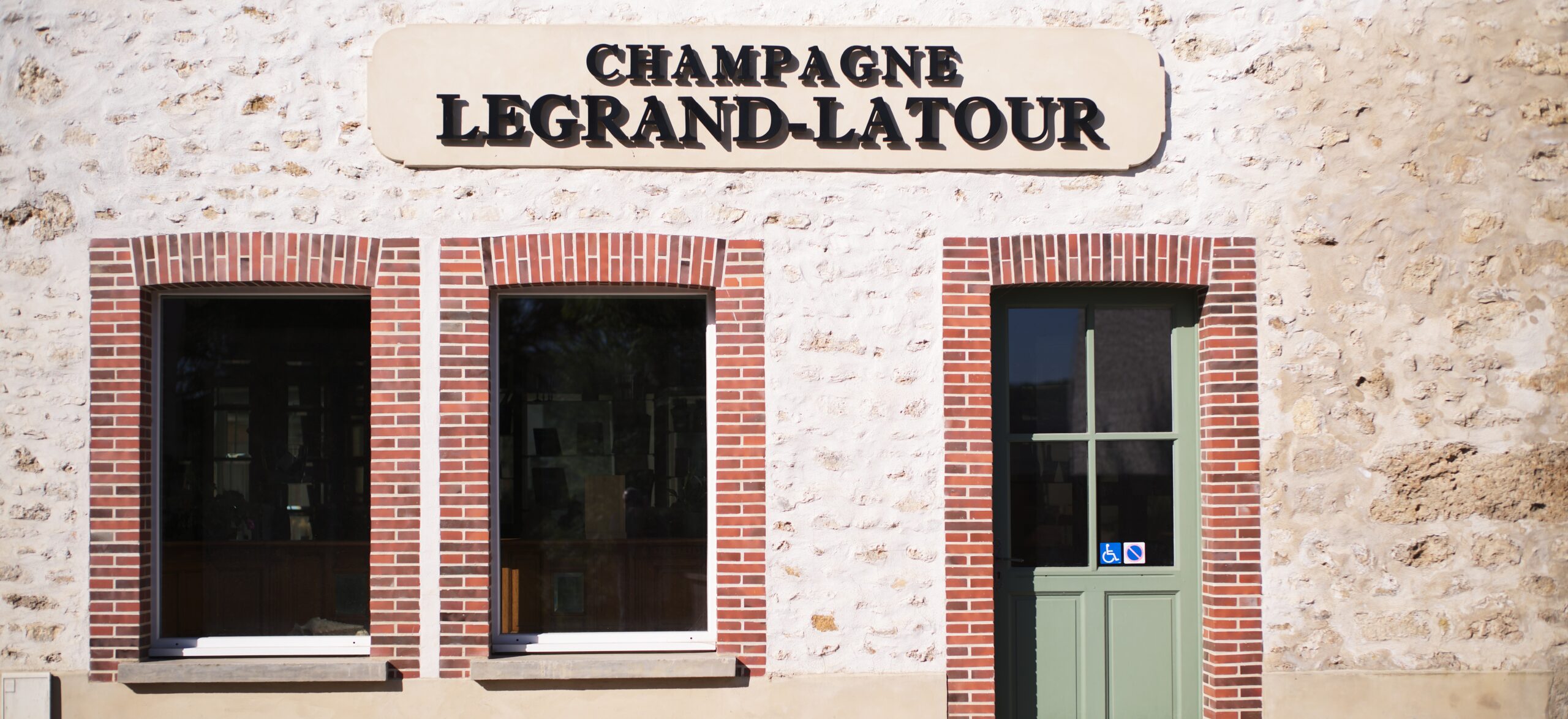The tiny commune of Fleury-la-Rivière is located 11 kilometers northwest of Epernay on the right bank of the Marne River, in a side valley formed by the small stream called Le Brunet. The vineyards in Fleury-la-Rivière are primarily southeast-facing, mid-slope parcels of Pinot Meunier growing in calcareous soils. After discovering many fossilized shells in his vineyards, local vigneron Patrice Legrand began digging in search of more. What began as a hobby in 2004, became an all-consuming passion that led to the excavation of a miles long, 300-meter-deep hand-carved cave (and now museum) dedicated to the documentation and preservation of sea creatures from 45 million years ago during the Lutetian period — pre-Ice Age when the Paris Basin was still under water. The “Caves aux Coquillages” is a Champagne cellar like no other, combining geology, paleontology, and of course, oenology.
Like his father before him, Patrice had always sold his fruit to the local cooperative. In 2007, Patrice’s son Thibault joined his parents, farming vineyards that extended from their home village west to vineyards in the Vallée de la Marne villages of Vandières and Verneuil. With no formal training in the vines or caves, he followed his father’s conventional farming practices and continued selling to the coop. After five years of work and observation in the vineyards, Thibault began to consider his work more deeply, seeing life above ground as a reflection of life below ground. In 2012, he stopped using herbicides and began converting to natural viticulture, vowing to repair and rebuild his soils. Over the next five years, he evolved to a low-/no-till system, aiming to disrupt the soils as little as possible. Additionally, he also moved to largely eliminate shoot pruning and instead he gathers the long shoots and braids them in the canopy above the vines, a process similar to such artisanal producers as Bartolo Mascarello. He adds, "when you cut the shoots, you risk scarring and damaging the plant material which later has to heal itself".
In addition to encouraging native grasses and plants to grow between vine rows, Thibault also sows low-growing clover to capture nitrogen. He no longer has a tractor, and everything in the vineyards is done by hand. The work is physically hard and mentally demanding as Thibault is in a perpetual state of consideration, making sure that each action is necessary and beneficial. As he explained, “Before I do something, I ask why?”
In 2017, with vibrant vineyards thriving in a more complex ecosystem, Thibault made the bold move to quit the coop and produce his own, estate-bottled wines. He pressed his first juices with childhood friend Flavien Nowack. Thibault acknowledges that working with Flavien was a gift as he shared a commitment to natural farming, and he taught Thibault how to naturally produce wine. Also in 2017, Thibault’s father began digging more caves for his son to house barrels and stock bottles. Deeply inspired by his father’s life’s work and passion, Thibault chose to vinify and bottle his wines according to different geological strata from the Lutetian period. While he admits that myriad factors contribute to the character of a wine, he believes geology plays the biggest role in determining a wine’s identity. Consequently, each barrel is given a nickname — “we don’t call our kids baby 1 and baby 2,” said Thibault, “so why would we treat this living thing any differently?”
In the cellar, Thibault aims to work simply and precisely. Wines are fermented in barrel with native yeast and no additives, except sometimes sulfur, which is only used prescriptively. If the wine is thriving, he adds zero sulfur. Additionally, there are no pumps, and everything is done by gravity. Furthering his quest for wines without artifice, Thibault embraces a risky and rarely employed method for capturing the bubbles in his wines. Other than the cuvée Ypresien, which uses MCR (rectified concentrated grape must) to initiate the secondary fermentation, Thibault chose to add frozen grape juice to all other cuvées to launch the second fermentation. As of the 2020 vintage, he employs the “Agrapart Method” opting to use fresh, unfrozen juice from the following year for the prise de mousse. This approach is not only the way to achieve a Champagne of 100% pure juice, but it also adds no alcohol to the wine, unlike traditional sugar mixture additions that add approximately 1.5% alcohol to the finished wine. This allows Thibault to seek phenolic ripeness and balance in the vineyard without the fear of elevated alcohols in the finished Champagnes. While there is much discussion of this method in the region, it is quite rare to see it applied. Adding frozen juice, though not commonplace, is seen more frequently and will likely be more embraced as growers continue to contend with the challenges of a warming climate.
After bottling, all Legrand Latour Champagnes are aged on the cork for 30-40 months in the family caves, which maintain perfect humidity and temperature. Because the exchange of energy between a wine and its environment is foundational to Thibault’s philosophy, he chooses to do all riddling and disgorging by hand (à la volée). The current releases are as follows:
EOCÈNE - Eocene includes all geologic periods that formed the land 34-56 million years ago. From vineyards grown in clay-loamy, sandy, and green-clay soils in the village of Verneuil, this 50/50 blend of Chardonnay and Meunier is fine-tuned and energetic with lovely weight and length.
YPRÉSIEN - Ypresien is a geologic period from 48-56 million years ago. The successive sedimentations that form this terroir are sometimes from fresh water and sometimes from sea water. From Meunier and Pinot Noir grown in soils of marl, clay, fine sand, and sandstone in the villages of Vandières and Verneuil, this blend has depth and drive with a crunchy mineral underpinning.
LUTÉTIEN - Lutetien is represented by a deposit of calcareous sand, rich in fossilized shells, which bear witness to a tropical sea. 45 million years ago, this sea from the Paris Basin extended as far as Champagne. From vineyards in the village of Vandières, this 50/50 blend of Chardonnay and Pinot Noir has both power and precision with a talcum texture reminiscent of the finest limestone-rich terroirs.
With such intention behind every decision and action, it’s no surprise that Thibault Legrand’s constant questioning has led to assorted projects, including a perpetual reserve named “Jude” which he started in 2019, his son’s birth year and the year he earned Demeter certification, along with a foudre name “Sol” which currently holds his cuvée Campagnan, an extended élevage wine aged one year in barrel followed by one year in foudre (2026 release). Thibault Legrand and his range of complex, profound, and lively wines are a once in a blue moon discovery. We can only imagine what will be unearthed in the years to come.
